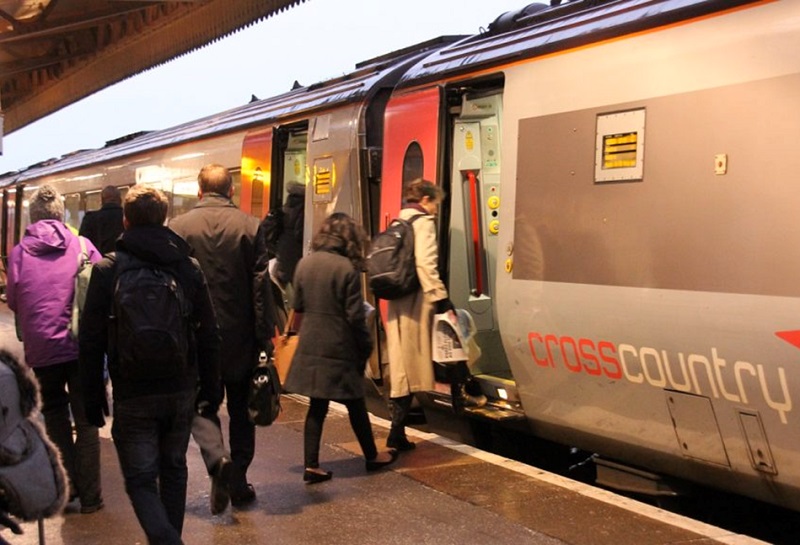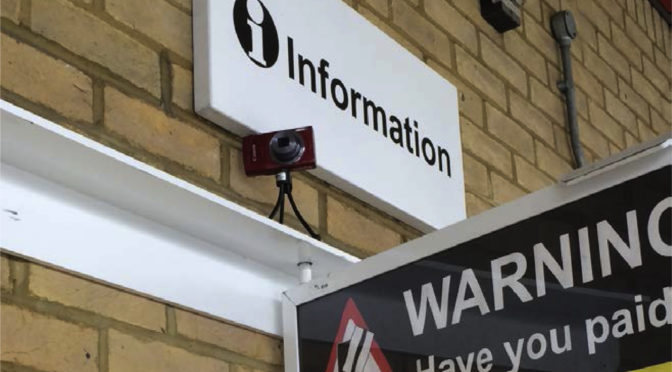This piece was originally produced as part of my contribution to the Contemporary Issues in Ergonomics and Human Factors, a teaching module for the master's program at the School of Psychology, University of Derby. It was produced alongside a podcast to foster discussions with students during workshops and lectures
A few years ago I was hired as the user experience researcher to work for the CLoSeR project, which proposed a new technology for the rail industry in the UK. The intention was to make journeys safer, more efficient and comfortable, and at the same time being a commercially viable system. The innovation was a package comprised a smartphone app for passengers, a tablet app for crew, seat sensors, seat ticket scanners, seat displays, a loyalty scheme and an overarching new communications system between trains and the operating company.
To develop such ambitious system, a consortium of 6 partner institutions and companies was formed, with a combination of diverse expertise and skills. There were project managers and business analysts to guide the work packages. We had also computer scientists and systems engineers responsible for the development of the systems. Hardware engineers designed and supplied the technologies and back end functionalities. Others designed and implemented the loyalty scheme for this project. We also had a large train operator company that allowed testing of the technology. I was tasked with bringing the user research perspective, to remind the developers and businessmen that there are users behind their creations, with needs, limitations, behaviours and attitudes.

During meetings with representatives of these consortium partners, they shared anecdotes of problems for passengers. One of these issues is the concentrated boarding, when rail passengers congregate in certain areas of the platform and board the train carriages that stop near these areas. They then explained that some of the features proposed by the CLoSeR system could minimise this problem.
For example, one feature is based on wayfinding information. A system can give directions which are displayed on a smartphone to help passengers finding platforms, carriage and seat on the train. It can include navigational information, which will include the train composition in relation to the direction of travel, the number of coaches and the carriage ordering, so passengers can anticipate how to better get to their seats by standing at the right place on the platform. This has been a difficult information to provide because trains vary in size and direction, and platforms are different in sizes and accesses. But data can come from the dispatch of the train, if technology is used to map each carriage and its order, combined with the station layouts.
Another feature is carriage occupancy levels. Live information could show the occupancy levels of current and future trains. Passengers will be able to access information regarding the occupancy levels in real time. Some train operators in different countries provide some sort of occupancy information, but these are often inferred by other sources like reservations or weight of the train (Nielsen et al., 2014) and not the real passenger data. This feature was made possible due to occupancy sensors installed in every seat, therefore providing a more reliable figure.
The consortium partners believed these features could motivate passengers to spread out more on the platform. Consequently, alighting and boarding would be more efficient and safer. It could also shorten the dwell time, that is the duration that a train remain stopped at a station. However, the problem that the system was trying to solve was not very clear, since a literature review indicated that no previous research had actually measured where passengers stand on platforms. Studies tend to focus on the layout of the carriage, gap and step between train and platform (Seriani et al., 2019; Seriani & Fernandez, 2015).
Therefore, I performed together with a final year undergraduate intern a user observation research (Fox et al., 2017; Oliveira et al., 2019). It involved video recording technology to observe the movements of passengers on platforms. The intention was to observe the phenomenon of concentrated boarding in a structured way. We used a bird’s eye technique, a style of data collection that allows researchers to gather information without direct interference with those being observed (Hanington & Martin, 2012). We used video recordings that allowed large quantities of data to be analysed extensively. Cameras were mounted discreetly, to avoid the ‘observer effect’ (Willis et al., 2004). Unobtrusive observation is an appropriate data collection technique in the context of studying pedestrians and their behaviours, as it enables large numbers of people to be studied in public spaces (Kuniavsky et al., 2012).

We installed several cameras along a platform and then analysed this data to produce heatmaps. They showed where passengers tend to board, indicating a ‘concentrated boarding’ near the platform entrance. The technology proposed by the consortium could minimise this issue, but also could other strategies.

As usual, this research indicated avenues for future research. We observed that some trains presented a more concentrated boarding than others. Passenger could be at that position due to lack of familiarity with the current station, or because they are already considering the layout of the destination station (Pritchard, 2018). We suggested that by observing more trains, classifying trains by destination, mapping passenger trajectories in more detail, or hearing from passengers themselves, it will be possible to suggest the most effectives strategies to counter concentrated boarding.
More information can be found in our journal article: “Analysing passengers’ behaviours when boarding trains to improve rail infrastructure and technology”, published online: https://doi.org/10.1016/j.rcim.2018.12.008
References
Fox, C., Oliveira, L., Kirkwood, L., & Cain, R. (2017). Understanding users’ behaviours in relation to concentrated boarding: Implications for rail infrastructure and technology. Advances in Transdisciplinary Engineering, 6. https://doi.org/10.3233/978-1-61499-792-4-120
Hanington, B., & Martin, B. (2012). Universal Methods of Design: 100 Ways to Research Complex Problems, Develop Innovative Ideas, and Design Effective Solutions. Rockport Publishers.
Kuniavsky, M., Goodman, E., & Moed, A. (2012). Observing the User Experience: A Practitioner’s Guide to User Research (2nd ed.). Morgan Kaufmann.
Nielsen, B. F., Frølich, L., Nielsen, O. A., & Filges, D. (2014). Estimating passenger numbers in trains using existing weighing capabilities. Transportmetrica A: Transport Science, 10(6), 502–517. https://doi.org/10.1080/23249935.2013.795199
Oliveira, L. C., Fox, C., Birrell, S., & Cain, R. (2019). Analysing passengers’ behaviours when boarding trains to improve rail infrastructure and technology. Robotics and Computer-Integrated Manufacturing, 57(December 2018), 282–291. https://doi.org/10.1016/j.rcim.2018.12.008
Pritchard, J. (2018). Providing Improved Crowding Information to Provide Benefits for Rail Passengers and Operators. In N. A. Stanton (Ed.), International Conference on Applied Human Factors and Ergonomics (Vol. 597, pp. 973–984). Springer International Publishing. https://doi.org/10.1007/978-3-319-60441-1_93
Seriani, S., & Fernandez, R. (2015). Pedestrian traffic management of boarding and alighting in metro stations. Transportation Research Part C: Emerging Technologies, 53, 76–92. https://doi.org/10.1016/j.trc.2015.02.003
Seriani, S., Fernandez, R., Luangboriboon, N., & Fujiyama, T. (2019). Exploring the Effect of Boarding and Alighting Ratio on Passengers’ Behaviour at Metro Stations by Laboratory Experiments. Journal of Advanced Transportation, 2019, 1–12. https://doi.org/10.1155/2019/6530897
Willis, A., Gjersoe, N., Havard, C., Kerridge, J., Kukla, R., Willisô, A., Gjersoe, N., Havard, C., Kerridge, J., & Kukla, R. (2004). Human movement behaviour in urban spaces: Implications for the design and modelling of effective pedestrian environments. Environment and Planning B: Planning and Design, 31(6), 805–828. https://doi.org/10.1068/b3060

